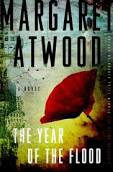In her new book Seaweed Chronicles: A World at the Water’s Edge, Susan Hand Shetterly elevates ordinary seaweed to the exalted place in nature that it deserves. Shetterly portrays seaweed as a wild untamed force of nature—elusive in its scope and one of the most overlooked species of life on this planet.
Our everyday interactions with seaweed are largely unconscious. We eat it, slather it on our bodies, spray our vegetable gardens with it, and use it to make In her beer. Seaweed contributes more than half of the oxygen in Earth’s atmosphere.
Seaweeds are not plants, in a strict sense, they are algae. Seaweeds have no leaves, stems, or roots. Their fossilized remains date back millions of years. The ancient Romans used seaweed to treat skin ailments and it has been a staple of the Japanese diet for hundreds of years.
More than a primer on seaweed, Shetterly weaves personal stories of people who forage, farm, and process seaweed—individuals who serve as the ultimate caretakers of the marine algae.
One couple, Linette and Shep Erhart, who built one of the most successful seaweed processing companies on the coast of Maine, began by foraging seaweed for their own consumption. Before they knew it, their kitchen-table endeavor had morphed into a successful international enterprise. A few years ago the Erharts recognized that if they were to remain competitive, they were going to have to take direction from the fishing industry and begin farming their seaweed crop.
One of the impediments encountered by the seaweed industry involves ownership. Is the right to catch fish the same as the right to cut seaweed? Seaweed is historically an indigenous, foraged crop but like other endemic species, it is currently threatened by climate change. The Fukishema nuclear accident in 2011 generated widespread fear about the safety of Japan’s seaweed and Atlantic hurricanes have taken a toll on the industry. At the same time, demand for the product has increased exponentially.
Complicating the issues of ownership and the effects of climate change, seaweed provides a habitat for numerous species of wildlife. Sea otters depend on giant kelp for survival, as do sea urchins.
“It’s a life-sustaining relationship,” writes Shetterly, “kept in balance by the otters: the sea urchins feed on the kelps; the otters feed on the urchins, preventing the kelps from being overgrazed and the underwater forests from becoming decimated.”
That balance once thrived in South Western Alaska but now it is defunct. One prominent marine biologist attributes the depletion of baleen whales to the demise of the seaweed, otters, and sea urchins.
Seaweed Chronicles is a well-written, thoughtful book that celebrates the benefits of seaweed in nature’s diverse chain of command.
























